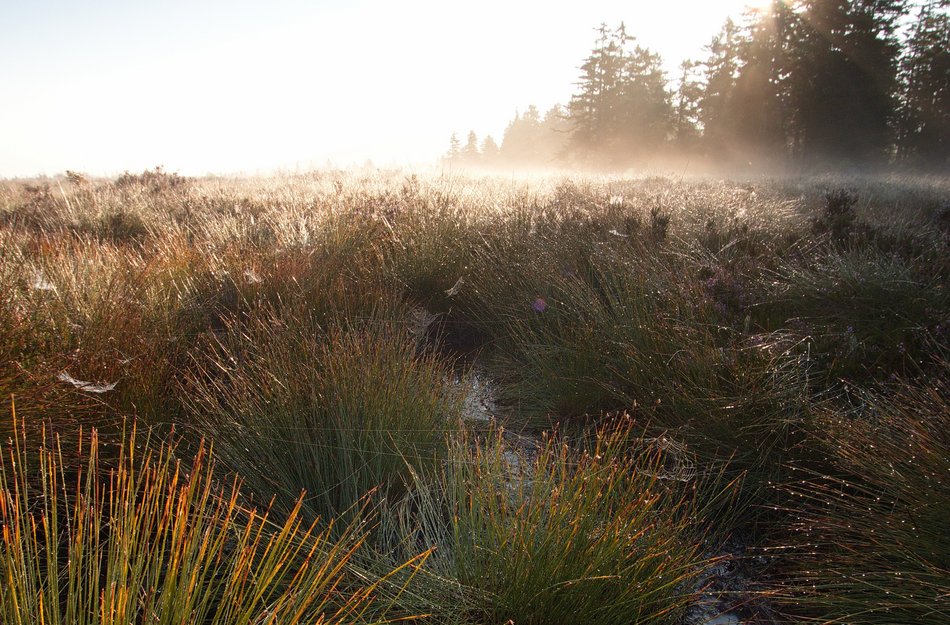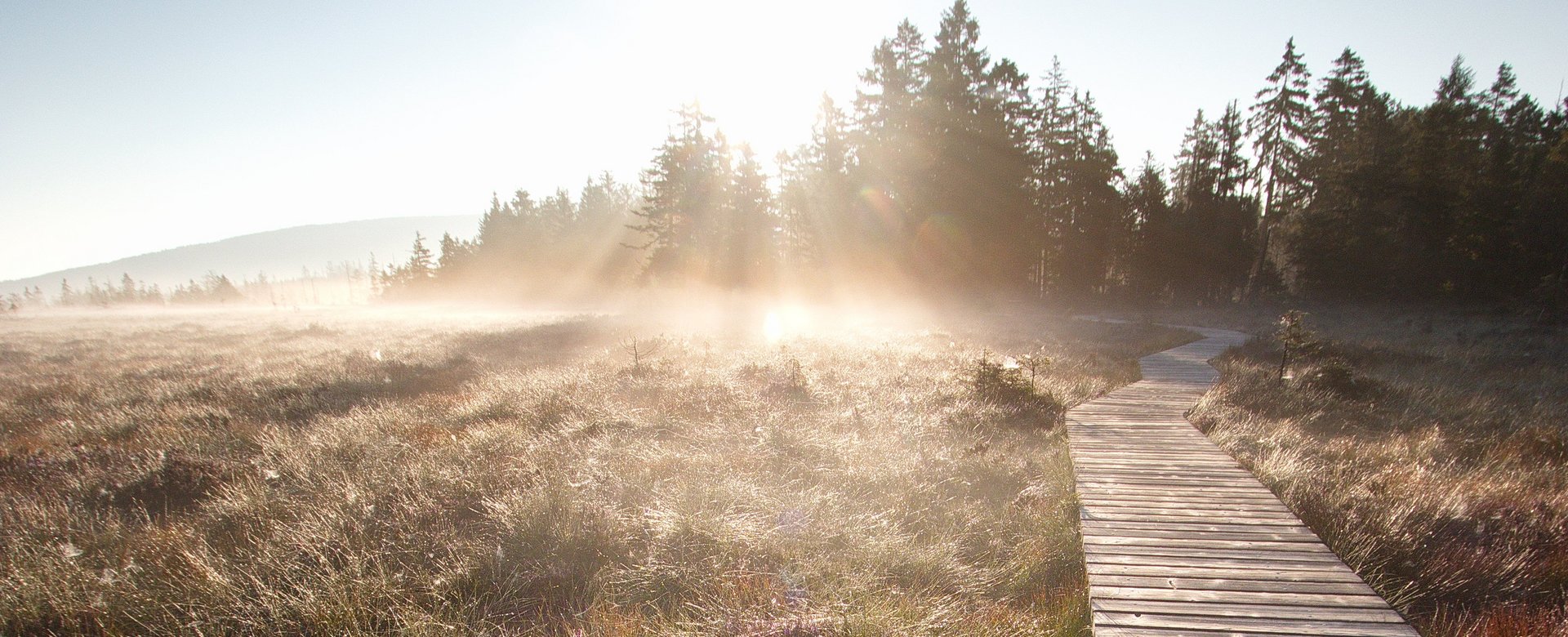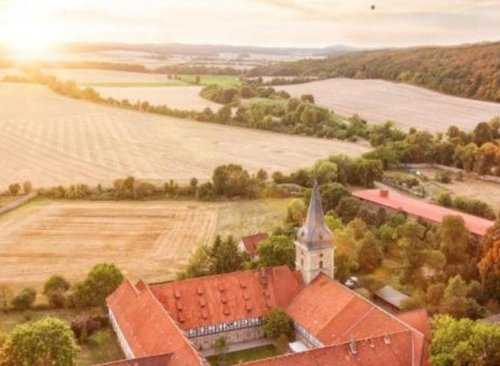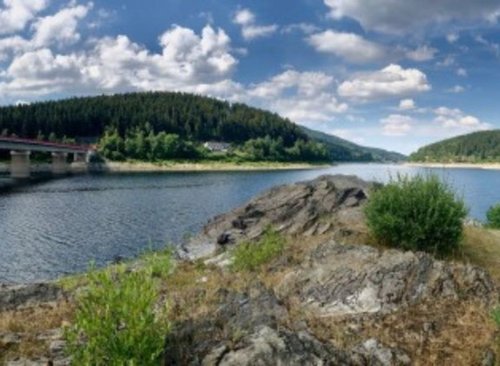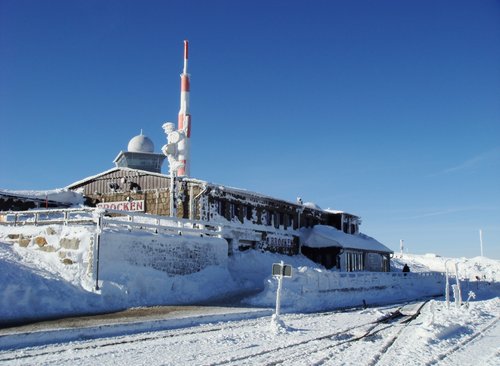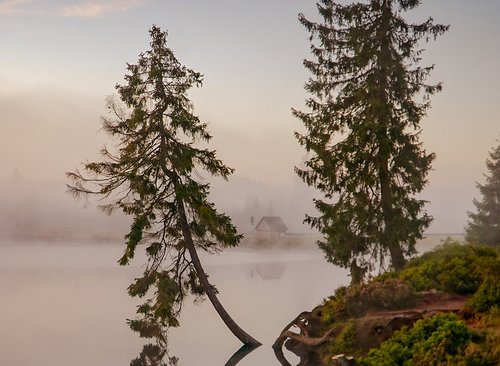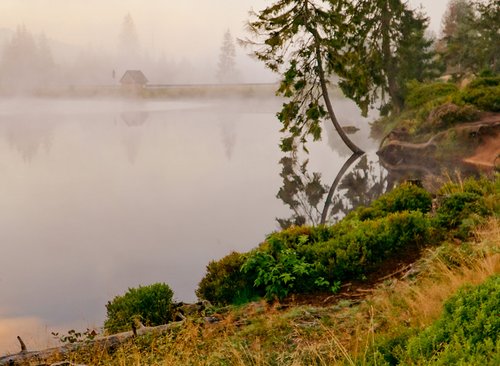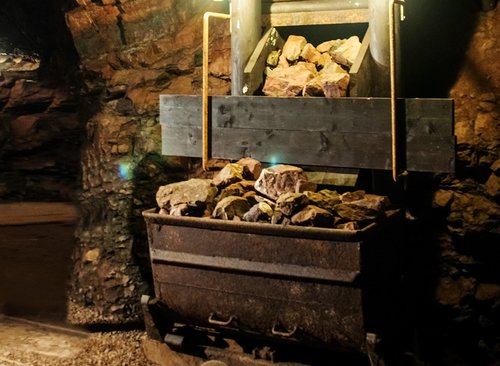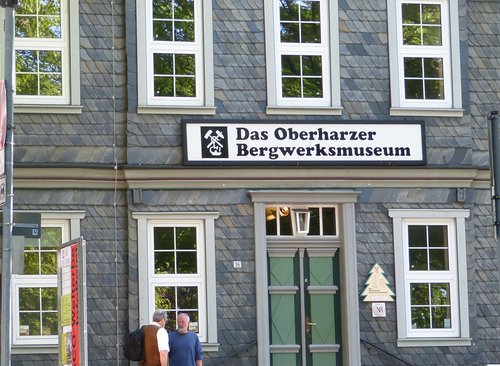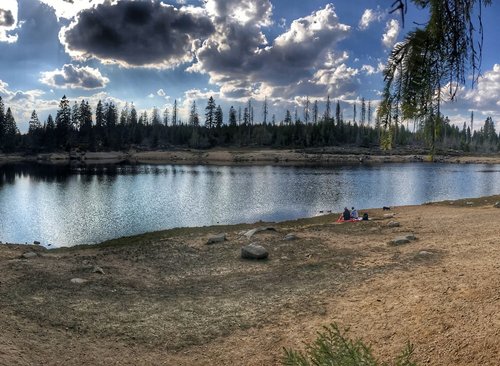The moors in the Harz
Visit the moors in the Harz Mountains, one of the oldest natural landscapes in the region. Their formation dates back to the end of the last ice age around 10,000 years ago. Plenty of water is a prerequisite for the formation and growth of moors. It is therefore not surprising that the moors are mainly found on the rainy side of the Harz, i.e. west of the Brocken and at higher altitudes. In the raised bogs in the Oberharz , the soil is saturated with water and the environment is very acidic. The nutrient supply in the moors is also very poor because the nutrients come exclusively from rainwater. Only a few specialised animal and plant species can cope with these extreme conditions.
In the moors you will find peat mosses that most people are not familiar with. These are small rootless plants that continue to grow upwards and die off towards the bottom. They are responsible for peat formation and the growth of raised bogs and have created peat thicknesses of up to seven metres in the Harz moors. Another plant, however, is certainly familiar to many visitors to the Harz: the carnivorous sundew. These inconspicuous plants, only a few centimetres tall, are perfectly adapted to their habitat. Small insects cling to the glandular hairs on the leaves, which are covered with adhesive droplets, and can be digested by the plants in 1 to 2 days.
Excursions to the Harz moors
The Harz moors are among the best preserved in Germany. In contrast to the raised bogs of the North German lowlands, they have never been peated on a large scale, as the peat soils dry very poorly due to the cold and damp climate and removal was very time-consuming and expensive. This is why the Harz moors are also very valuable habitats that are worth protecting. Contribute to their preservation by staying on the boardwalks specially created for moorland exploration. The moorland vegetation is very sensitive to trampling and trampling damage can still be recognised in the moor months later.
In the Harz region around Brocken and Bruchberg, you will find around 2,800 hectares of moorland and moorland spruce forest. You can discover the beautiful moorland landscape at the Torfhaus, for example. On theGoethe Trailin the direction of Brocken, you will reach the "Große Torfhausmoor", which you can explore via a wooden footbridge. This is the source area of the Radau, a tributary of the Oker, where the moor formed around 3,000 years ago and reached its current size. The Große Torfhausmoor is one of the oldest raised bogs in the Hochharz.
